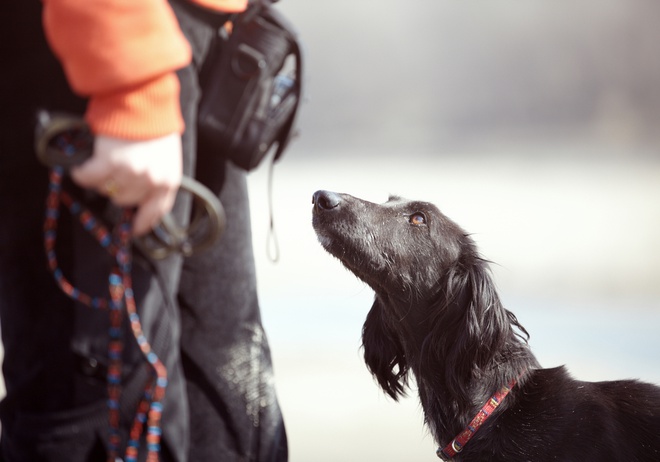What should I do if I found a lost pet?
There are over 10 million missing pets in the United States each year. Unfortunately, only 15% of these missing animals are reunited with their owners. These low statistics underscore why anyone who finds a lost dog or cat should try to help with reunification as much as possible.

Reading time : 8 min
It can be pretty upsetting when you see a lost pet. Animal lovers never enjoy seeing a lost or hurt animal and want to reunite the pet with their owners. If you wonder, “What should I do if I found a lost pet?” we’re here to help. Let’s go over what to do if you find a lost dog or cat.
TOPICS
Steps after you found a lost pet

Determine if they’re really lost
So, you found an animal running around your neighborhood, poking through the trash, or it showed up in your front yard. What to do if you find a lost cat or dog is to determine first if they’re actually lost.
Cats
The cat you see may not be lost; it may only be an indoor/outdoor cat that simply roamed too far from home. Cats’ territories vary, but most cats travel ½ a mile on their own. Some cats may be more adventurous and roam for longer distances. What to do if you find a stay cat is to pay attention to how it acts. Does it seem comfortable outside, or does it appear frightened and hungry?
The United States doesn’t have a “Right to Roam” law for cats like the UK does, but still, some American households may have a cat door that allows their cats to come and go as they choose. Outdoor cats may also belong to a feral cat colony fed by volunteers. These cats often go through TNR or Trap Neuter Release, meaning they’re taken care of and released back into the community. A TNR program ensures cats undergo spaying or neutering and receive the necessary vaccines and care while letting them live independently. If you see a cat with a tipped ear, it’s probably part of a colony and should be left alone.
Dogs
As for dogs, they’re more likely to be lost, especially if the dog is a smaller breed, such as a terrier or Chihuahua. Small breed dogs can sometimes escape easily through or under a fence. Regardless of the dog or cat’s size, if the animal looks sick, scared, hungry, or hurt, it’s likely lost and needs help. You should approach the animal calmly and slowly if that's the case. Watch the animal’s body language, and see how it responds to your approach. If you can trap or contain the lost pet, then do so, but be careful. If it’s not safe for you to approach the animal, but you can see it clearly needs help, call your local animal shelter or rescue team.
Look for identification
Once you have the animal safely in your care, you should check for identification. If you found a lost dog or cat, verify if they’re wearing a collar with any identifying information. With any luck, you might see the pet’s collar has the owner’s name, address, and phone number visible. If that’s the case, you can contact the owner and make plans to meet.
Sadly, only some lost dogs or cats will wear a collar with ID tags, or the pet may have lost it while escaping from a fence. Your next step is to look for other forms of identification, such as a microchip.
Have the lost pet scanned for microchips
A microchip is tiny and measures no bigger than a grain of rice. Vets, animal shelters, and animal hospitals implant the microchip under a pet’s skin. Microchips feature radio frequency and transmit identifying information. When scanned, the chip’s unique number string corresponds to information about the pet and its owner. If you find a lost dog or cat, take it to a veterinarian’s office or animal control for a scan.
If you live near a PetSmart store with a Banfield Veterinary Clinic, you can also take the animal to the store for a microchip scan. Hopefully, the animal has a microchip with updated information. If so, then you can reach out to the owner. Pet owners must keep their dog or cat’s information up to date in microchip databases. It highly helps give back lost pets to their families and is even mandatory in some European countries.
The Microchip Registry Lookup by the American Animal Hospital Association is a database of microchip companies that may correspond with the animal’s chip. If you found a lost dog or cat with a microchip, you can check the microchip number for information about the potential registries.
After you find the registry, the owner’s information may be outdated. Or maybe the pet lacks a microchip, and you don’t know where to turn next. Well, it’s time to post and tell the world you’ve found a lost pet.
How to report a lost cat or dog?

Local authorities and animal advocates
Your local shelter is first on the list of who to call when you find a lost dog or cat. Many state and city animal shelters will have a found pet tipline or an online form to report a found animal.
The animal shelter may also be a good answer to the question, “Where can I take the lost dog I found?” if you can’t have pets in your apartment or home. Most animal shelters take in lost pets and try to reunite animals with their owners. Be aware some animal shelters have a limited hold time for strays, especially at “kill” shelters. If you don’t have a no-kill shelter, investigate local animal rescue options.
While they’re no authorities like animal control or the police department, animal rescue organizations in your area are also an excellent contact after finding a lost pet. Petfinder, a website for rehoming shelter areas, includes an animal rescue database by state and zip code.
Tell the internet you found a lost dog or cat
Social Media
Social media is a common place for people to report a lost dog or cat. Many US cities or counties feature a local lost pet Facebook group, which Pawboost often administers. Pawboost is an organization that helps pet owners reunite with their beloved animals. They feature lost pet groups across the country and amplify announcements for people who found a dog or cat.
After you find your local Pawboost or independent lost pet/found pet Facebook group, don’t forget to share it with your friends so they can share it with others. You never know who will see your post, and you can simply cover a lot of virtual ground by sharing. As you report a lost dog or cat, set the post to Public so that everyone can see it, or it won’t show up with the information to anyone who’s not your social media friend.
Mobile App
Another option after you found a lost dog or cat is to post on NextDoor. This neighborhood app lets you share lost and found pet notices within your area, which is a great way to ensure your message is seen locally. You can also look through NextDoor’s Lost and Found section for reports similar to the animal you found.
When posting, include information about the dog or cat and indicate how the owner may contact you.
Post found dog or cat flyers
What is the key information to put on my flyer?
Even in the age of social media, a paper flyer is still a valuable way to advertise a found pet. A flyer in the right place catches the attention of hundreds of people daily, and it’s a cost-effective way to get the message out quickly. When you make your found pet flyer, include the following:
- Your contact information, including a phone number or email address
- A clear photo of the cat or dog
- A description of the pet’s personality
- The address or area where you found the animal
You should also add a message about requiring proof of ownership, such as photos or videos of the pet. This disclaimer helps eliminate people who may lie and claim it’s their lost furry friend.
Where should I put it?
Take time to create an eye-catching flyer letting people know you found a lost dog or cat. You don’t need to spend a lot of money on your flyer; just use bright paper and big lettering, so it captures attention right away. Post your flyer on telephone poles, in a vet’s office, and on community bulletin boards. You should focus on putting the flyer in areas with high visibility. Tack up your flyer near major intersections, parks, playgrounds, or near schools, as these feature heavy foot and vehicle traffic. Never put a flyer inside someone’s mailbox without permission, as this is against the law.
Websites where you can report you found a dog or cat
In addition to social media, there are several websites specifically for lost and found pets. Petco’s Love Lost is a free database where people can report a lost dog or cat. They also allow you to post notices for missing pets, so you browse for lost pet reports in your area and see if there’s a match. Love Lost works with over 1,700 animal shelters nationwide to help reunite pets with their parents and features over 100,000 pet photos. The website uses a powerful facial recognition system that analyzes pet photos to determine matches between lost and found reports.
The Humane Society of the United States operates its own website, The Center for Lost Pets, for reports of lost and found animals. When you post your found cat or dog on the website, it analyzes lost pet reports to find any matches. You can also sign up for email notifications for potential matches in the future.
Another potential website for posting a lost pet you found is Craigslist. The online classified service lets anyone post for free and will get the animal’s information out to people within the area. Visit the Post tab, then go to Community > Lost and Found to share that you found a lost dog or feline friend in the area.
If you found a dog, what to do next is to visit Fido Finder, a website exclusively for found and missing dogs. Once you report a found dog, registrants get emails if the dog matches their pet’s profile. You can view any matches Fido Finder makes after registering with the website.
Find out the 5 most important steps to find your lost pet
All the information you need to find your beloved companion
Can I keep the found cat or dog?

Don’t just keep the animal - Exhaust all possibilities first
While you may have the inclination to keep the found dog or cat, resist the temptation. It may have a family that waits desperately for it to come home. You should always try every avenue to locate a lost pet, just like you would someone else who found your pet if lost. Try to put yourself in the pet’s owner's shoes and think how frantic and upset they may be.
When can you keep a found dog or cat?
Sometimes, despite all of your efforts, you might not locate a pet’s owner. Maybe they moved away or deliberately turned their cat or dog out on the street. Whatever the reason you can’t find a pet’s owner despite several attempts, it’s common. If the animal is comfortable in your home and you can take care of it, you may consider making the pet a permanent part of your family.
Conclusion
We hope this answers the question, "What should I do if I found a lost pet?” that may arise when you find a stray cat or dog. To increase the chances of reuniting, follow all of these steps and try to spread the word as much as possible.
Continue reading our guide
This article is part of a complete guide on the subject. Do not miss the next chapters.
How to find a lost pet ?
Discover the 5 most important steps
All the information you need to find your beloved companion
